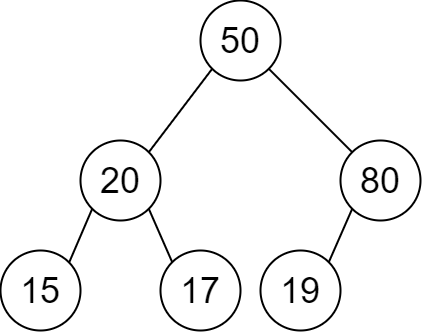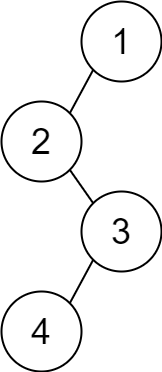Create Binary Tree from Descriptions: Tail Recursion
This problem is a simple parser of the input data structure, placing it in a hashtable (the "graph") followed by a tail recursion. Tail recursion happens when the recursive call is the last statement in the function. It can easily be modified by using a stack, de-recursifying a function, this is usually well done by functional languages. In my case, I kept the recursive calls. Code is down below, cheers, ACC.
Create Binary Tree From Descriptions - LeetCode
You are given a 2D integer array descriptions where descriptions[i] = [parenti, childi, isLefti] indicates that parenti is the parent of childi in a binary tree of unique values. Furthermore,
- If
isLefti == 1, thenchildiis the left child ofparenti. - If
isLefti == 0, thenchildiis the right child ofparenti.
Construct the binary tree described by descriptions and return its root.
The test cases will be generated such that the binary tree is valid.
Example 1:

Input: descriptions = [[20,15,1],[20,17,0],[50,20,1],[50,80,0],[80,19,1]] Output: [50,20,80,15,17,19] Explanation: The root node is the node with value 50 since it has no parent. The resulting binary tree is shown in the diagram.
Example 2:

Input: descriptions = [[1,2,1],[2,3,0],[3,4,1]] Output: [1,2,null,null,3,4] Explanation: The root node is the node with value 1 since it has no parent. The resulting binary tree is shown in the diagram.
Constraints:
1 <= descriptions.length <= 104descriptions[i].length == 31 <= parenti, childi <= 1050 <= isLefti <= 1- The binary tree described by
descriptionsis valid.
public TreeNode CreateBinaryTree(int[][] descriptions)
{
Hashtable allNumbers = new Hashtable();
Hashtable graph = new Hashtable();
for (int i = 0; i < descriptions.Length; i++)
{
int parent = descriptions[i][0];
int child = descriptions[i][1];
bool isLeft = (descriptions[i][2] == 1);
if (!allNumbers.ContainsKey(parent)) allNumbers.Add(parent, false);
if (!allNumbers.ContainsKey(child)) allNumbers.Add(child, true);
else allNumbers[child] = true;
if (!graph.ContainsKey(parent)) graph.Add(parent, new Hashtable());
Hashtable children = (Hashtable)graph[parent];
if (!children.ContainsKey(child)) children.Add(child, isLeft);
}
//Find root
int root = 0;
foreach (int n in allNumbers.Keys)
{
if (!(bool)allNumbers[n])
{
root = n;
break;
}
}
TreeNode tree = new TreeNode(root);
CreateBinaryTree(root, graph, tree);
return tree;
}
private void CreateBinaryTree(int node,
Hashtable graph,
TreeNode tree)
{
if (!graph.ContainsKey(node)) return;
Hashtable children = (Hashtable)graph[node];
foreach (int child in children.Keys)
{
bool isLeft = (bool)children[child];
if (isLeft)
{
tree.left = new TreeNode(child);
CreateBinaryTree(child, graph, tree.left);
}
else
{
tree.right = new TreeNode(child);
CreateBinaryTree(child, graph, tree.right);
}
}
}



Comments
Post a Comment